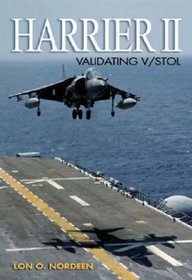Many books written on specific aircraft types tend to be little more that "hero worship" essays that appear to be written by the company's public affairs department. In them, the design had no faults and, if it was used in combat, nearly won the war single-handed.
Fortunately, this study of the Hawker Siddeley Harrier, which includes the US McDonnell Douglas AV-8 version, manages to maintain some degree neutrality, even though the author's love for the aircraft is very obvious.
The book contains a good number of statistics, specifications, photographs, and much information on the development, production, testing, service introduction and peacetime and combat operations.
The Harrier was truly an amazing and unique design and when operated within it capabilities, was an incredibly effective air-to-ground and air-to-air weapon system. The author does discuss the the design's limitations and early problems. The major problem was the massive Pegasus engine that provided vertical lift and forward momentum. Although a marvel of engineering, it took up most most of the space in the small airframe and was very thirsty. With little room for fuel and avionics internally, extending range and adding additional electronics involved creative weight and balance changes and also meant that many items were mounted externally.
Nonetheless, the British and American engineers worked to keep the aircraft current, such as using new composites to save weight on the new larger wings used on the Harrier II model. Plus,the British and American services (the Royal Air Force, Royal Navy and US Marine Corps) fine tuned the Harrier into an aircraft that more than met it design specifications.
Mr. Nordeen did a good job of telling the Harrier's story without too much 'cheerleading.'
Fortunately, this study of the Hawker Siddeley Harrier, which includes the US McDonnell Douglas AV-8 version, manages to maintain some degree neutrality, even though the author's love for the aircraft is very obvious.
The book contains a good number of statistics, specifications, photographs, and much information on the development, production, testing, service introduction and peacetime and combat operations.
The Harrier was truly an amazing and unique design and when operated within it capabilities, was an incredibly effective air-to-ground and air-to-air weapon system. The author does discuss the the design's limitations and early problems. The major problem was the massive Pegasus engine that provided vertical lift and forward momentum. Although a marvel of engineering, it took up most most of the space in the small airframe and was very thirsty. With little room for fuel and avionics internally, extending range and adding additional electronics involved creative weight and balance changes and also meant that many items were mounted externally.
Nonetheless, the British and American engineers worked to keep the aircraft current, such as using new composites to save weight on the new larger wings used on the Harrier II model. Plus,the British and American services (the Royal Air Force, Royal Navy and US Marine Corps) fine tuned the Harrier into an aircraft that more than met it design specifications.
Mr. Nordeen did a good job of telling the Harrier's story without too much 'cheerleading.'




